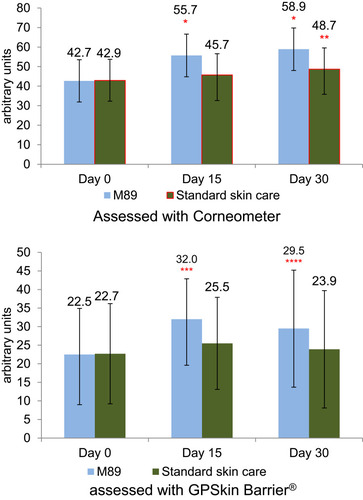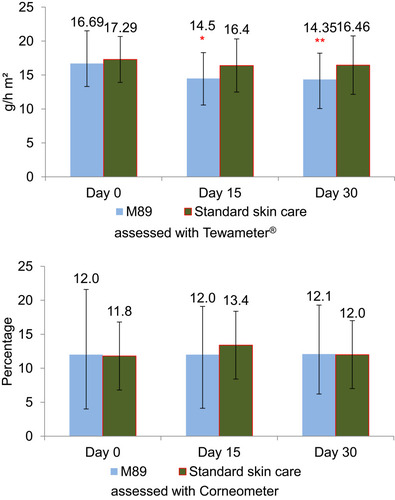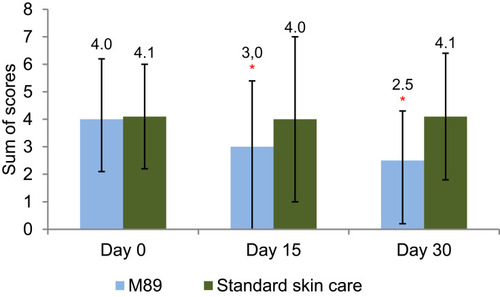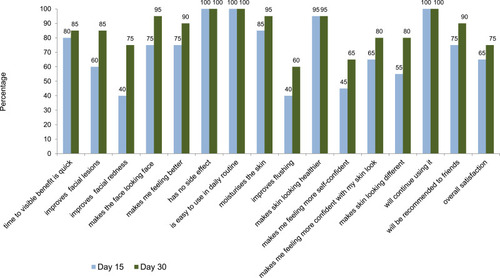Figures & data
Table 1 Demographic and Baseline Data
Figure 1 Skin hydration assessed with Corneometer and GPSkin® at Day 0, 15 and 30. Mean skin hydration measured using the Corneometer CM 825® had significantly improved from Day 0 at Day 15 and Day 30 in the M89 and the standard skin care group (*P<0.0001; **P<0.001). Mean skin hydration measured using GPSkin Barrier® had significantly improved from Day 0 at Day 15 and Day 30 in the M89 group (***P<0.01; ****P<0.05), while there was no significant improvement observed, at any time points with the standard skin care.

Figure 2 Transepidermal water loss (TEWL) assessed with Tewameter and Corneometer at Day 0, 15 and 30. Mean TEWL assessed with the Tewameter had significantly reduced from Day 0 at Day 15 and Day 30 in the M89 group (*P<0.05, **P<0.01), while there was no significant improvement observed, at any time points with the standard skin care. There was no statistically significant difference observed when using the Corneometer.



